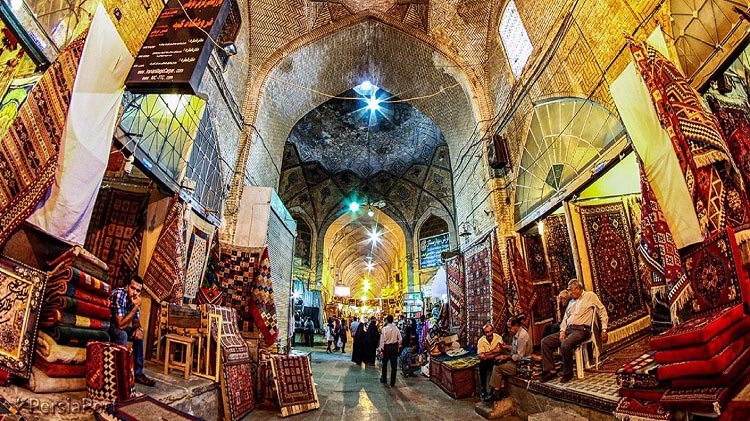silverjohn
One of Persia's oldest cities, and now one of Iran's most beautiful as well as its fifth larges (pop. 1.7 million), Shiraz in the country's southwest (a ten-hour drive from capital Teheran, or an hour-and-twenty-minute flight) is a city of history and art, wine and poetry (many of the greatest Persian poets and writers, such as Hafiz and Saadi, hailed from here).
Summers here are quite hot, but the rest of the year is pleasant, and perhaps the best time of year to travel to Shiraz is in May, when the streets are redolent with the perfume of blooming of orange blossom. For visitors, three or four days should suffice to experience the city's highlights, starting with some of the finest examples of Iranian gardens are in Shiraz. These include 800-year-old Eram Garden, with a magnificent palace surrounded by millions of plants of every shape and color, Other prime examples include Afif-Abad (though it perhaps jarringly now includes Iran's biggest arms museum) and Delgosha another ancient garden brimming with orange blossoms and citrus trees.
Historical sites are another major aspect of Shiraz tourism - most notably the nearby ruins of two ancient capitals, Persepolis and Pasargadae, which are UNESCO World Heritage Sites. Closer at hand are dozens of fabulous and diverse monuments of historical and cultural significance, such as Vakil Bazaar, the public baths, the Arg of Karim Khan, Qavam House, the holy shrine of Shah Cheragh, and the Nasir ol Molk Mosque. Here are a few more details on some of the highlights:
Pasargadae
The ruins of the capital of the Achaemenid (First Persian) Empire, built under Cyrus the Great (559-530 BCE) cover 1.6 square kilometres, with sites including the prison of Solomon, the Private Palace,the Audience Palace, the Gateway Palace, the Caravanserai of Mozaffari, and most especially the tomb of Cyrus the Great(above).
Persepolis
The greatest capital of classical Persia, 70 miles from Shiraz and not far from Pasargadae, this larger city was founded in 518 by a later Achaemenid king, Darius I the Great and expanded by his son Xerxes and grandson Ardeshir I. Echoes of its ancient grandeur can be seen in its grand palaces, columns, arches, and gardens, spreading over 600 hectares.
Vakil Bazaar
Shiraz’s labyrinthine, wonderfully photogenic main market place dates back to the 11th century and today is still bustling, home to hundreds of shops and stalls hawking rugs, spices, jewellery, and household goods, among other wares. It's fantastic not just to browse but explore its various teahouses, courtyards, caravanserais, and traditional bathhouse.
Eram Garden
As mentioned above, Shiraz is famed for its fine gardens, and Eram is arguably the finest, now part of Shiraz University’s botanical gardens, and replete with cypress trees, trimmed hedges, and rose bushes.
Nasir ol-Mulk Mosque
Not far from Shah-e Cheragh, the Nasir ol-Mulk Mosque, also known as the Pink Mosque, is one of Shiraz’s most famous buildings. Completed in 1888, it's celebrated for its delightfully colourful interiors: the stained-glass windows, intricately painted tiles and arches, and innumerable Persian carpets create a mesmerising, kaleidoscopic aesthetic which can’t fail to astound.





Comments